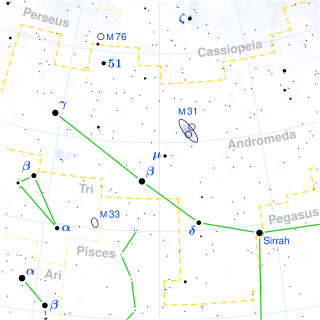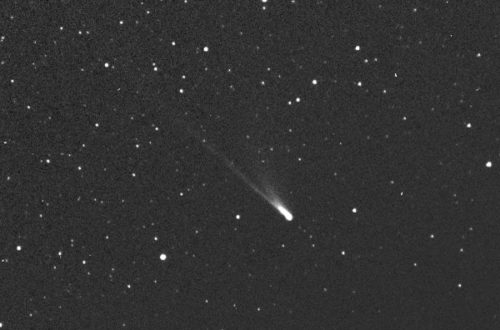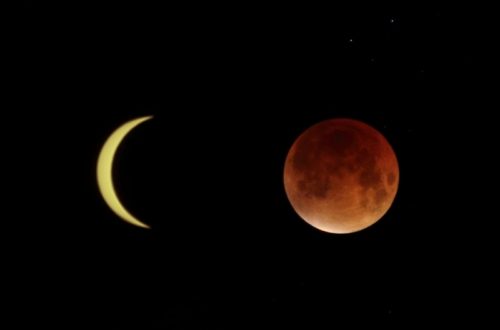Stargazing Calendar for April 2025
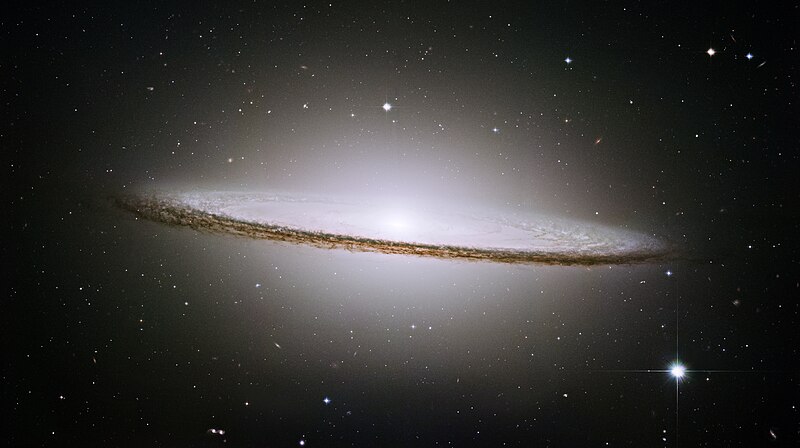
April 2025 will be an exciting time for astronomy enthusiasts, with a variety of stargazing events lighting up the night sky. From conjunctions of the Moon with bright planets and star clusters to meteor showers and deep-sky objects at their best viewing positions, there’s something for everyone to enjoy. Whether you’re using a telescope or simply looking up with the naked eye, this month’s cosmic lineup promises breathtaking sights.
Would you like to be notified of stargazing events?
List of Meteor Showers in April 2025
- Antihelion Source: Start on December 10; multiple peaks; end September 10.
- Lyrids: Start on April 16; peak on April 22; end on April 25.
- π-Puppids: Start on April 15; peak on April 23; end on April 28.
- η-Aquariids: Start on April 19; peak on May 5; end on May 28.
We also have a complete list of meteor showers for the entire year of 2025 here.
List of Planetary Conjunctions in April 2025
- Close approach of the Moon and the Pleiades in Taurus on April 1.
- Conjunction of the Moon and Jupiter in Taurus on April 3.
- Conjunction of the Moon and Mars in Gemini on April 5.
- Conjunction of Mercury and Neptune in Pisces on April 16.
- Conjunction of the Moon and Venus in Pisces on April 25.
- Conjunction of the Moon and Saturn in Pisces on April 25.
- Conjunction of the Moon and Mercury in Pisces and Cetus on April 26.
- Close approach of Venus, Saturn and Neptune in Pisces on April 28.
- Conjunction of Venus and Saturn in Pisces on April 29.
- Close approach of the Moon and the Pleiades in Taurus on April 29.
- Conjunction of the Moon and Jupiter in Taurus on April 30.
April 1: Close approach of the Moon and the Pleiades
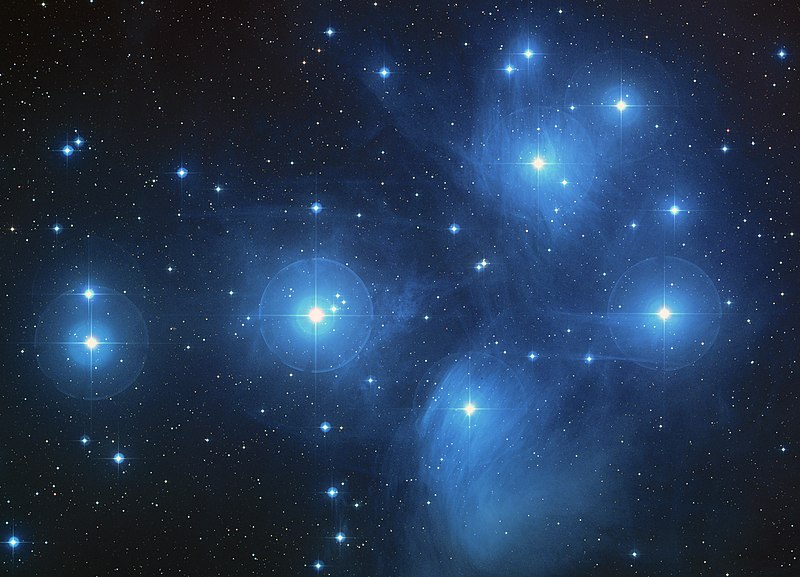
The Moon and the Pleiades (also known as M45 or Messier 45) will make a close approach, passing within 38.8 arcminutes of each other.
Both objects will be in the constellation of Taurus with the Moon being at apparent magnitude -10.8; and the Pleiades at 1.3. The Moon will not be interfering with stargazing much this early April 2025 as it will be 3 days old and waxing crescent at 21%
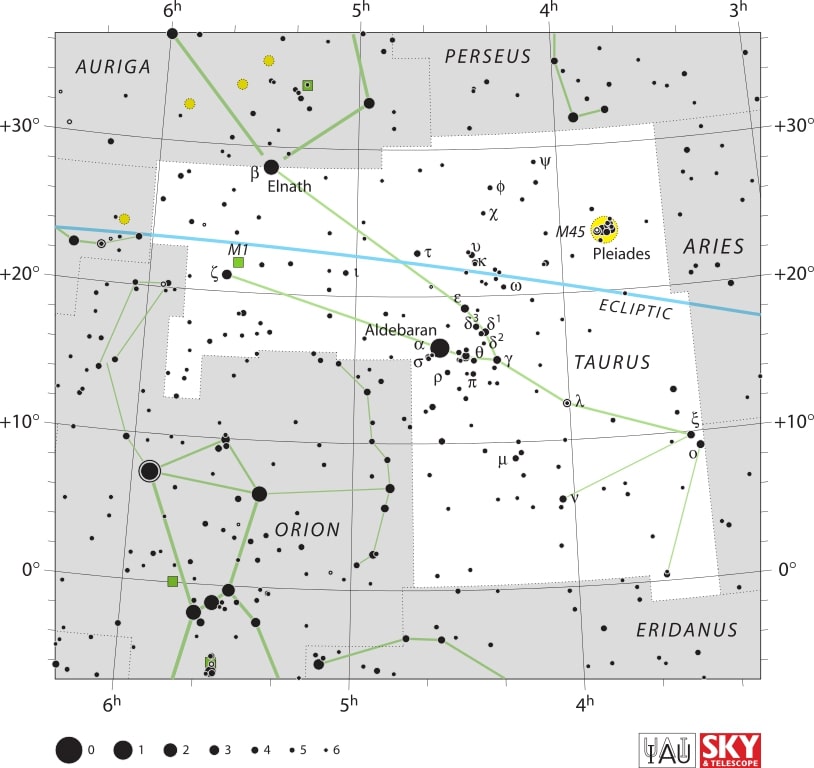
April 2: The Sombrero Galaxy at its highest point in the sky
The Sombrero Galaxy (see featured image at the top), also known as Messier 104 (M104) or NGC 4594, is a peculiar galaxy of unclear classification located in the constellation of Virgo. It gets its name from its distinctive appearance resembling a Mexican hat, with a prominent central bulge surrounded by a flat, disk-like structure of stars, dust, and gas. It is located 31.1 million light-years away in the Virgo II Groups, a series of galaxy clusters and individual galaxies stretching out from the southern edge of the Virgo Supercluster.
The galaxy will reach its highest point in the sky at around midnight local time. It will reach apparent magnitude of 8.6, which means it will require at large telescope to be able to distinguish the bulge from the disk. The Moon will be a 4 days old waxing crescent at 22%.
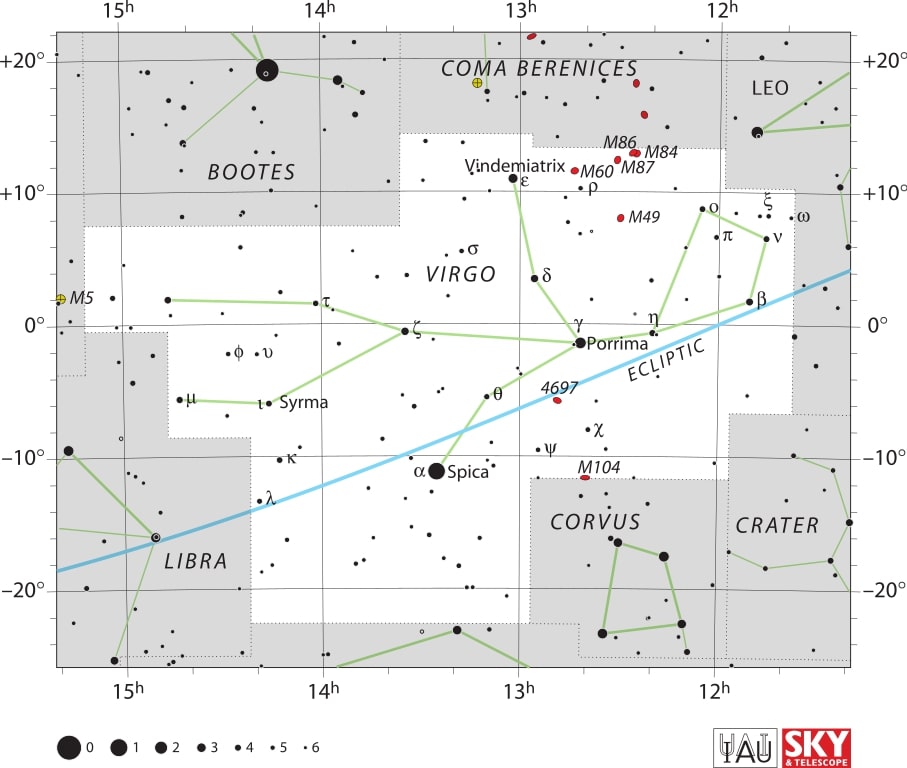
April 3: Conjunction of the Moon and Jupiter
The Moon and Jupiter will be at conjunction by sharing the same right ascension and passing within 5°30′ of each other.
Around the same time, the two bodies will also make a close approach (appulse) reaching 5°28′ from each other, but not sharing the same right ascension.
The two celestial bodies will meet in the constellation of Taurus with the Moon at apparent magnitude of -11.3 and Jupiter at -2.1. (Constellation map already displayed above, when discussing the close approach of the Moon and the Pleiades on April 1st.) The Moon will be a 5 days old waxing crescent at 32%.
April 5: Conjunction of the Moon and Mars
The Moon and Mars will be at conjunction by sharing the same right ascension and passing within 2°09′ of each other.
Around the same time, the two bodies will also make a close approach (appulse) reaching 2°06′ from each other, but not sharing the same right ascension.
Look for the two bodies in the constellation of Gemini. The Moon will be at apparent magnitude of -12.0, while Mars will be at magnitude 0.5. The Moon will be waxing gibbous (62%) at 7 days old.
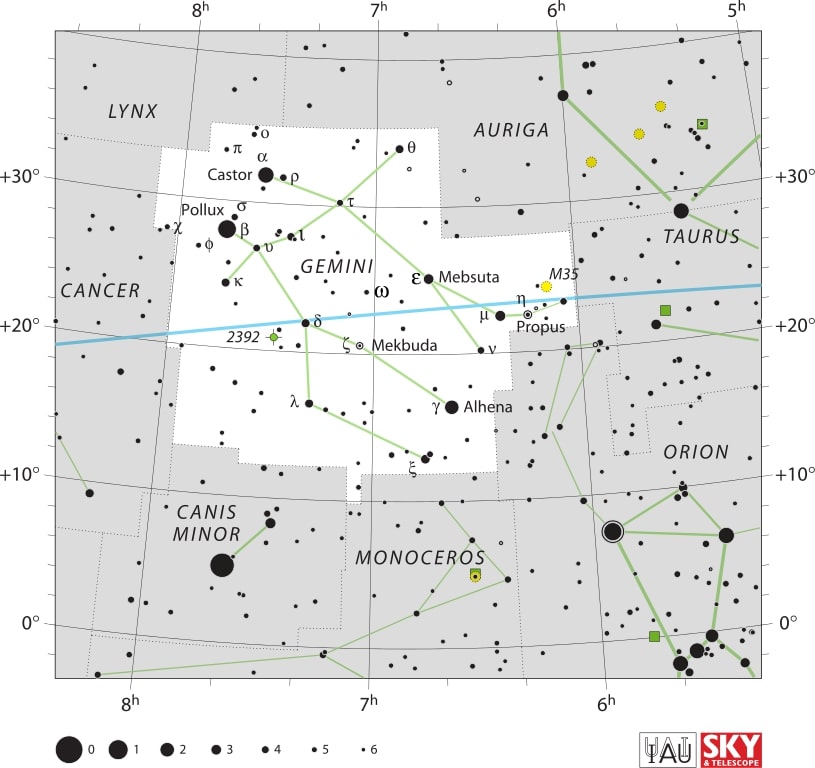
April 16: Conjunction of Mercury and Neptune
Mercury and Neptune will reach conjunction passing within 41′ of each other while sharing the same right ascension.
Mercury will be at apparent magnitude 0.5 and Neptune at magnitude 8.0 both in the constellation of Pisces. Unfortunately the Moon will start to interfere with stargazing this middle of April 2025 as it will be 18 days old waning gibbous at 84%.
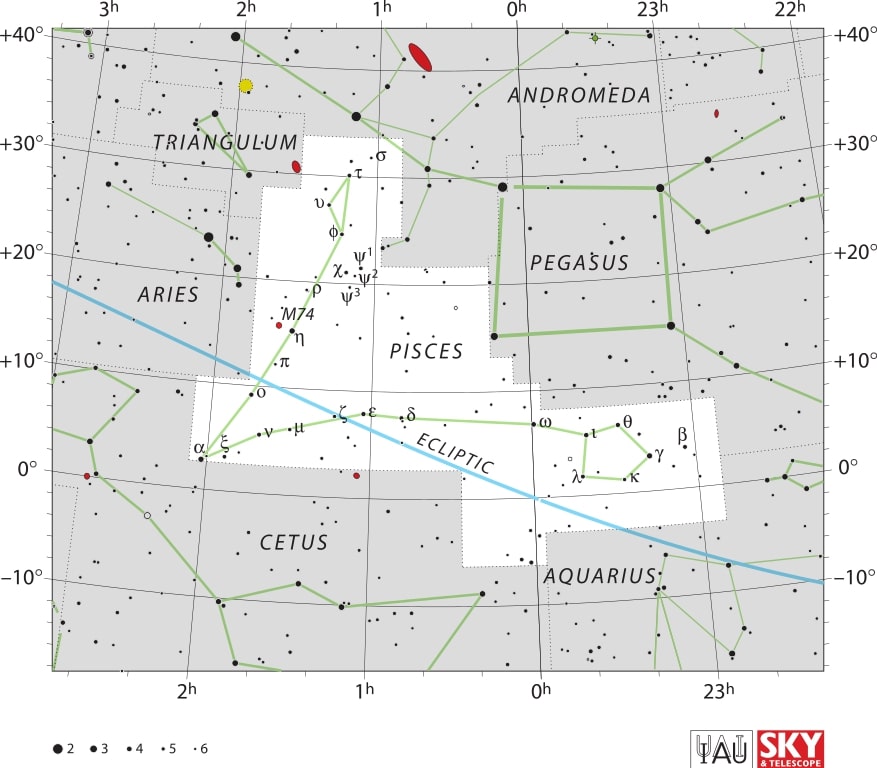
April 16: Mars at aphelion
During its 687-day orbit around the Sun, Mars will reach its aphelion, or furthest point to the Sun, at a distance of 1.67 AU.
Mars’ orbit is noticeably elliptical in comparison to the majority of planets, which have nearly perfectly circular orbits around the Sun with minor variations in distance of only a few percent. Its distance from the Sun fluctuates from 1.38 AU to 1.67 AU, which means that at aphelion, Mars receives 31% less light and heat from the Sun than it does at perihelion.
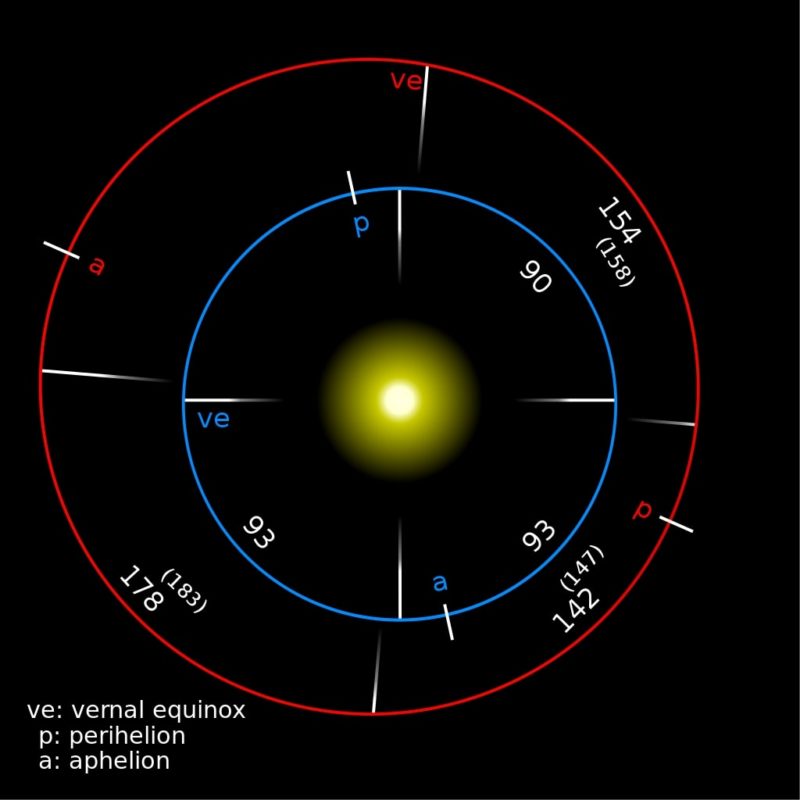
Mars will be at apparent magnitude 0.7 in the constellation of Cancer. The Moon will be 18 days old waning gibbous at 84%.
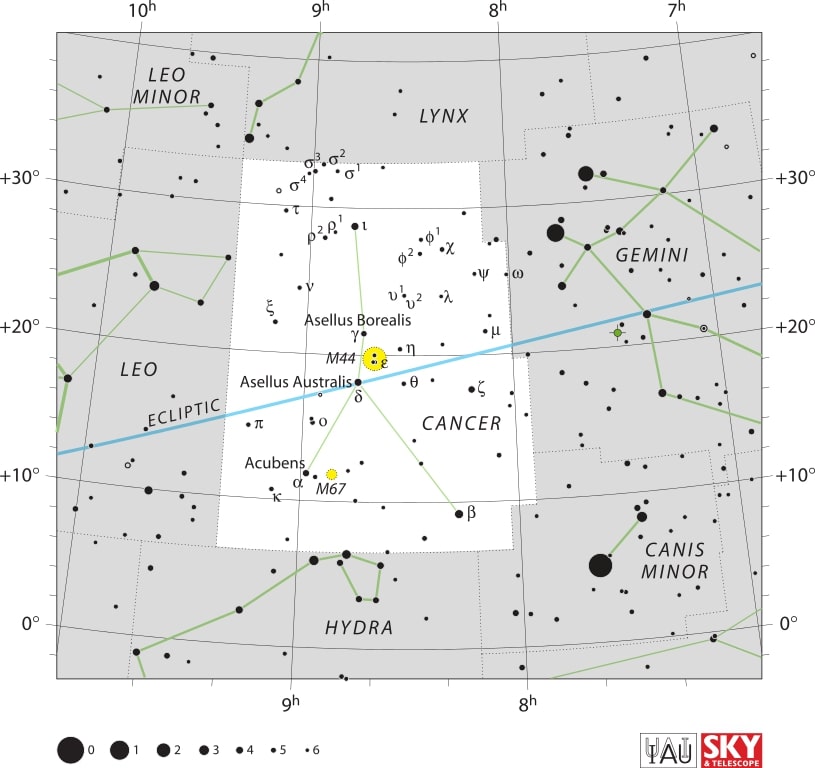
April 17: Mercury at aphelion
During its 88-day orbit around the Sun, Mercury will reach its aphelion, or furthest point to the Sun, at a distance of 0.47 AU.
Mercury’s orbit, like that of Mars, is significantly elliptical in compared to the majority of planets, which have nearly perfectly circular orbits around the Sun with small distance fluctuations of about a few percent. Mercury’s distance from the Sun varies between 0.307 and 0.467 AU, implying that at aphelion, it receives roughly half as much light and heat from the Sun as it does at perihelion.
Mercury will be in the constellation of Pisces. (Constellation map already displayed above, when discussing the conjunction of Mercury and Neptune on April 16.) The Moon will be 19 days old waning gibbous at 78%.
April 21: Mercury at greatest western elongation
Mercury will be at its highest point above the horizon in the morning sky, making it the best time to view the planet. Look for it low in the eastern sky just before sunrise.
It will be at apparent magnitude 0.3 in the constellation of Pisces. (Constellation map already displayed above, when discussing the conjunction of Mercury and Neptune on April 16.) The Moon will be 23 days old, waning crescent at 38%.
April 22: Dwarf planet Haumea at opposition
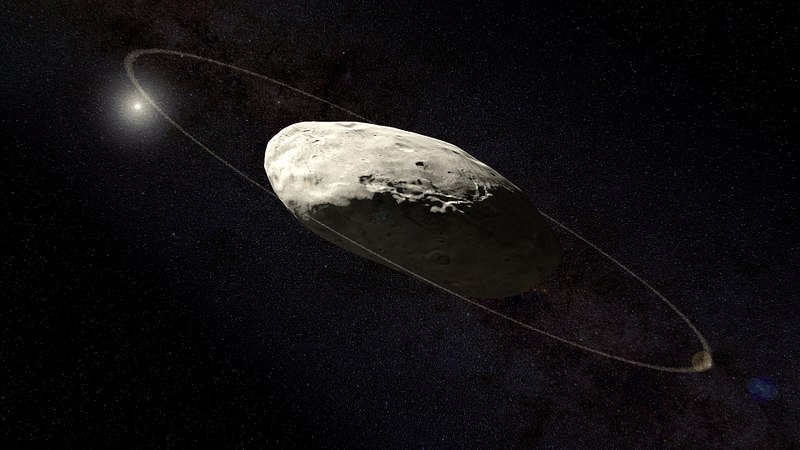
At about midnight local time, the dwarf planet Haumea (minor-planet designation of 136108 Haumea) will reach the highest point in the sky and be opposite of the Sun. Look in the constellation of Bootes with a large telescope, as it will have an apparent magnitude of 17.2. At around the same time Haumea will also reach its closest point to the Earth (perigee) at a distance of 49.01 AU.
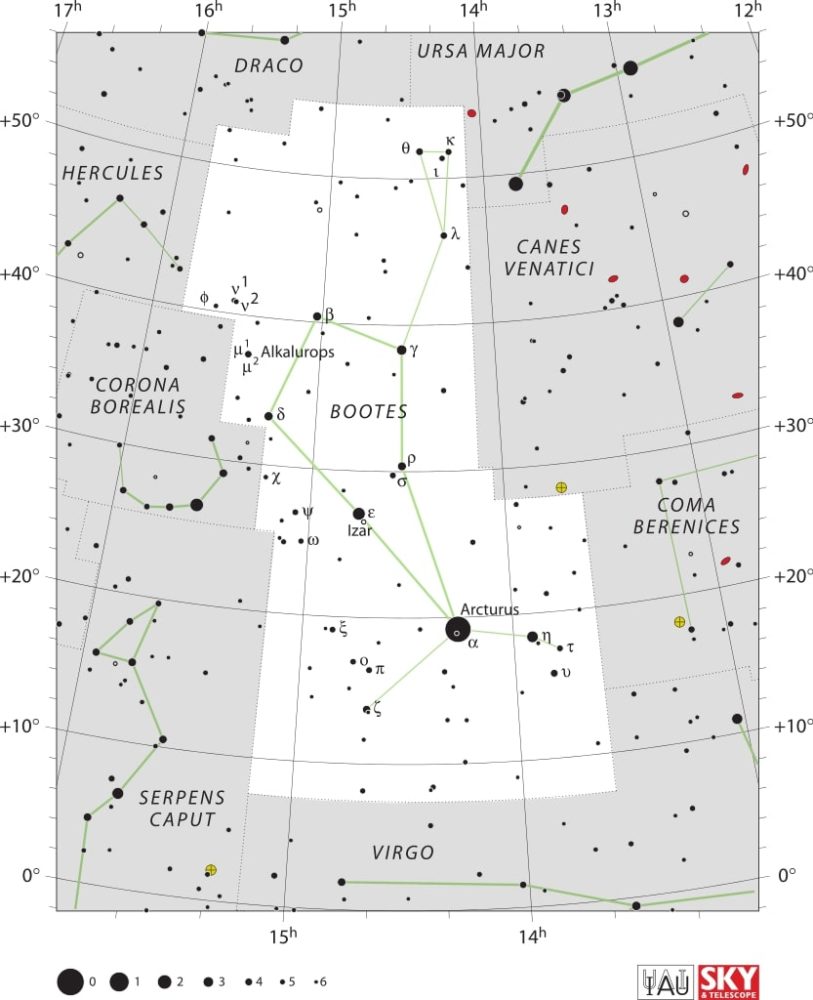
April 22: Lyrid meteor shower peak
The Lyrids will peak this April 2025 with a zenithal hourly rate of 18 meteors if stargazing conditions are optimal.
Some meteors may also be spotted between April 16 and April 25. They will radiate from the constellation of Lyra but near Hercules, at the speed of 49 km/s on average. The Moon will be a 24 days old waning crescent at 29%.
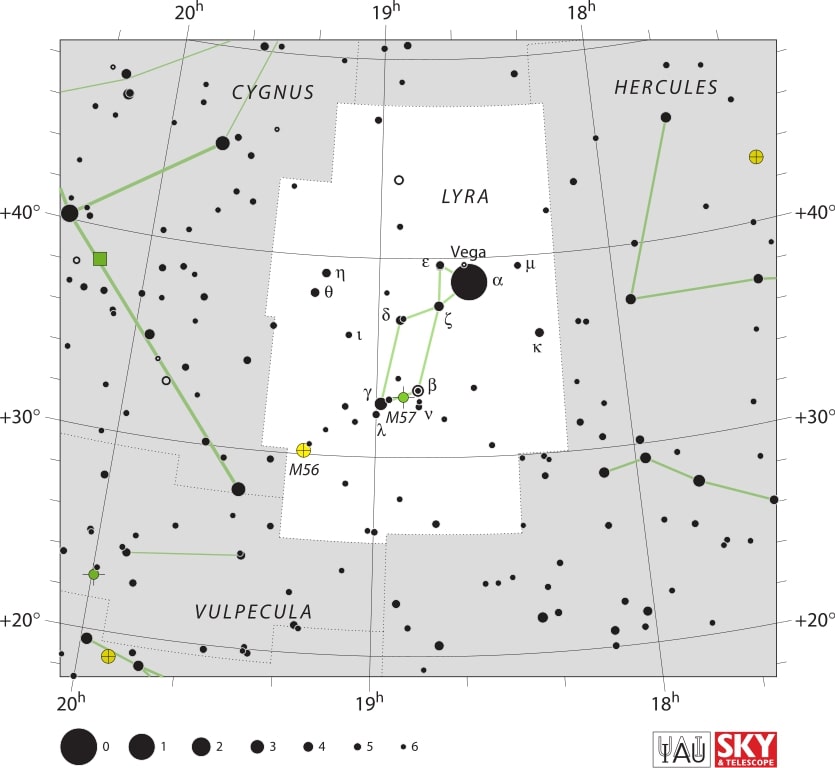
April 23: Pinwheel Galaxy at its highest point in the sky
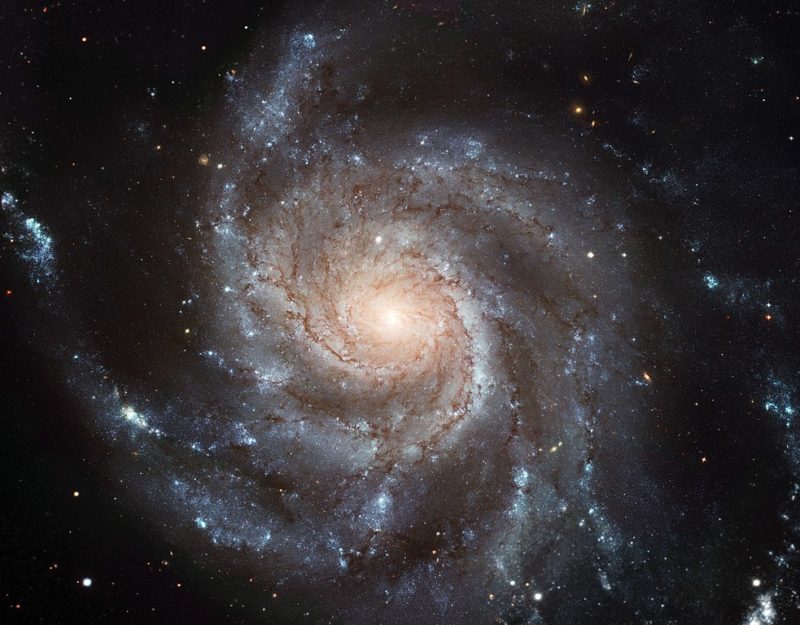
The Pinwheel Galaxy, also known as Messier 101 (M101) or NGC 5457, is a beautiful face-on spiral galaxy located 21 million light-years away in the constellation of Ursa Major.
The galaxy will reach its highest point in the sky at around midnight local time. It will reach apparent magnitude 7.9, which you’ll need a telescope for optimal viewing. The Moon will be a 25 days old waning crescent at 24%.
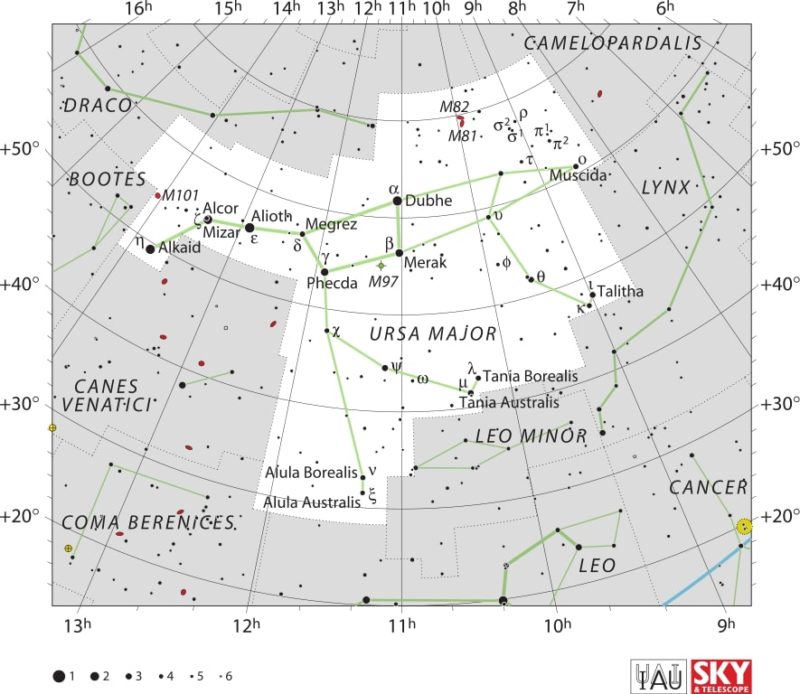
April 23: π-Puppid meteor shower peak
The Pi Puppids are a small variable meteor shower. The future of this shower is uncertain since Jupiter perturbed the orbit of the parent comet in 1999. The meteors from this shower originate from the comet 26P/Grigg-Skjellerup, which now orbits further out from Earth.
Some meteors may also be spotted between April 15 and April 28. They will radiate from the constellation of Puppis at the speed of 18 km/s on average. The Moon will be a 25 days old waning crescent at 17%.
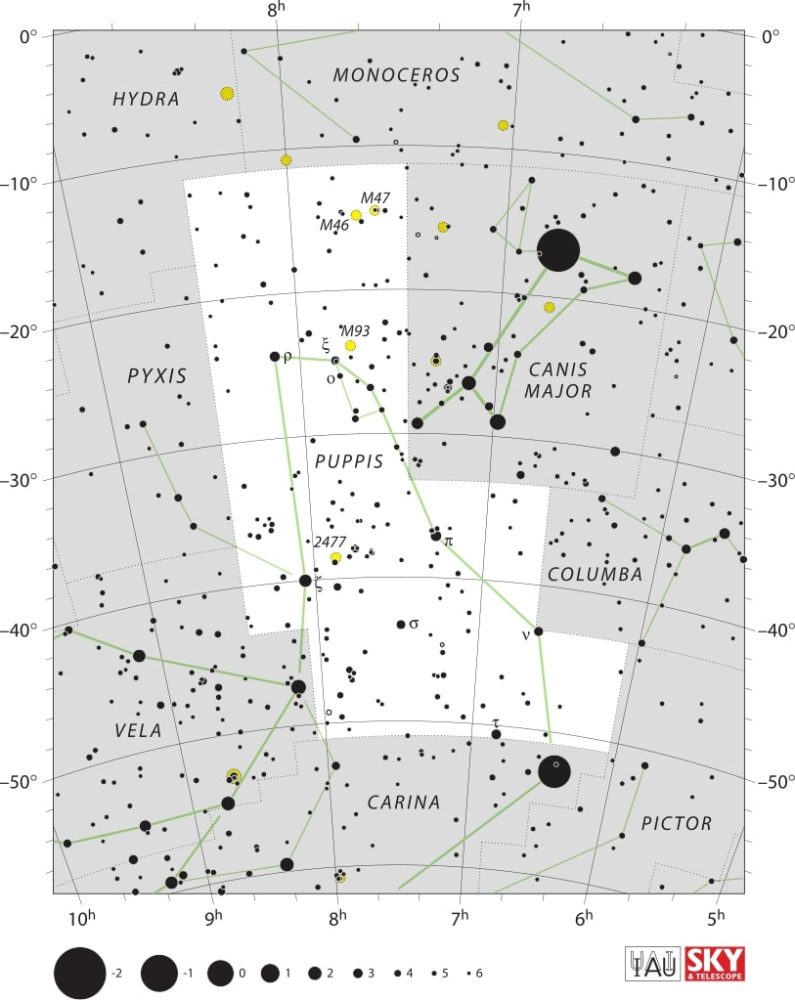
April 25: Conjunction of the Moon and Venus
The Moon and Venus will be at conjunction by sharing the same right ascension and passing within 2°23′ of each other.
At around the same time the two bodies will also make a close approach (appulse) reaching 2°05′ from each other, but not sharing the same right ascension.
Look for the two bodies in the constellation of Pisces. (Constellation map already displayed above, when discussing the conjunction of Mercury and Neptune on April 16.) The Moon will be a 27 days old, very thin waning crescent at 7%. Despite this, the Moon will still be at apparent magnitude of -10.4, while Venus will be at magnitude -4.5. Saturn will also be nearby, waiting for its own conjunction soon.
April 25: Conjunction of the Moon and Saturn
The Moon and Saturn will reach conjunction passing within 2°17′ of each other while sharing the same right ascension.
At around the same time the two bodies will also make a close approach (appulse) reaching 2°00′ from each other, but not sharing the same right ascension.
The Moon will be at apparent magnitude -10.3 in the constellation of Pisces and Saturn at magnitude 1.0 in the neighboring constellation of Aquarius. (Constellation map already displayed above, when discussing the conjunction of Mercury and Neptune on April 16.) The Moon will be a 27 days old, very thin waning crescent at 6%. Venus will also be nearby, still lingering after its own conjunction earlier.
April 26: Conjunction of the Moon and Mercury
The Moon and Mercury will be at conjunction by sharing the same right ascension and passing within 4°23′ of each other.
The two celestial bodies will meet at the edge of the constellations of Pisces and Cetus. The Moon will be at apparent magnitude -9.5 for and Mercury at 0.2. The Moon will be a 28 days old, very thin waning crescent at 2% and will not interfere much with stargazing this end of April 2025.
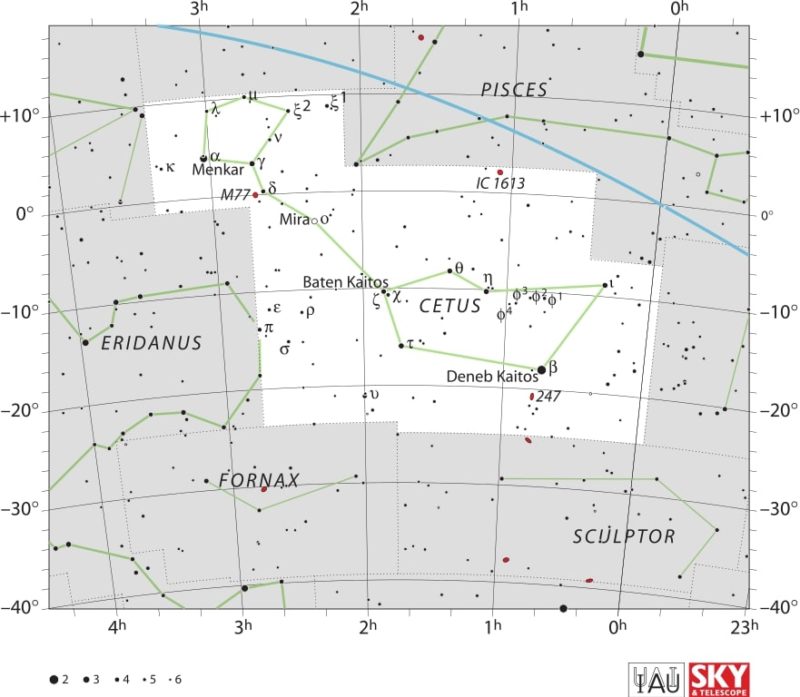
April 28: Close approach of Venus, Saturn and Neptune
The planets Venus, Saturn and Neptune will make a close approach (appulse) reaching 3°42′ of each other.
The trio will meet in the constellation Pisces with Venus at apparent magnitude of -4.5, Saturn at 1.0, and Neptune at 7.9. (Constellation map already displayed above, when discussing the conjunction of Mercury and Neptune on April 16.) The Moon will be one day old waxing crescent at 4%.
You will need a telescope to view the trio because Neptune is not visible to the naked eye. Otherwise you will only see the other two planets at close approach.
April 29: Conjunction of Venus and Saturn
Venus and Saturn will reach conjunction passing within 3°43′ of each other while sharing the same right ascension.
Venus will be at apparent magnitude -4.5 and Saturn at magnitude 1.0 both in the constellation of Pisces. (Constellation map already displayed above, when discussing the conjunction of Mercury and Neptune on April 16.) The Moon will be a 2 days old waxing crescent at 5%.
April 29: Close approach of the Moon and the Pleiades
The Moon and the Pleiades (also known as M45 or Messier 45) will make a close approach, passing within 34.2 arcminutes of each other.
Both objects will be in the constellation of Taurus with the Moon being at apparent magnitude -9.2; and the Pleiades at 1.3. (Constellation map already displayed above, when discussing the close approach of the Moon and the Pleiades on April 1st.) The Moon will be a 2 days old waxing crescent at 5%.
April 30: Conjunction of the Moon and Jupiter
The Moon and Jupiter will be at conjunction by sharing the same right ascension and passing within 5°23′ of each other.
Around the same time, the two bodies will also make a close approach (appulse) reaching 5°22′ from each other, but not sharing the same right ascension.
The two celestial bodies will meet in the constellation of Taurus with the Moon at apparent magnitude of -10.5 and Jupiter at -2.0. (Constellation map already displayed above, when discussing the close approach of the Moon and the Pleiades on April 1st.) The Moon will be a 3 days old waxing crescent at 16%.
Moon Phases in April 2025
As you know, the Moon has a big impact on the visibility of celestial bodies and astronomical events in the night sky. So to help you with stargazing, here’s a calendar of the phases of Moon for this month of April 2025:
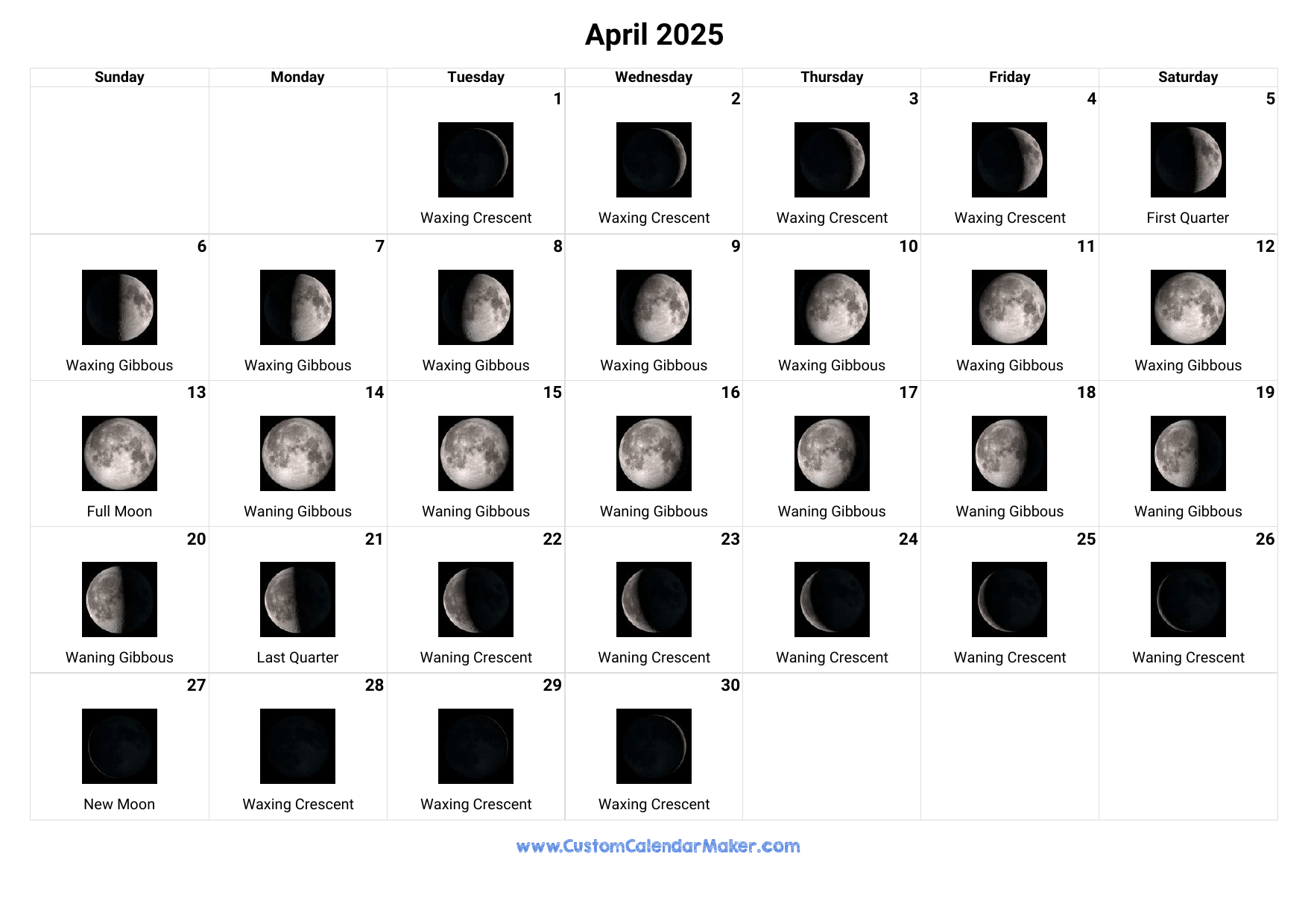
Positions of the Planets in April 2025
- Mercury: The closest planet to the Sun can be seen at dawn and dusk travelling across the constellation of Pisces. This planet, being the closest to the Sun, will appear to move quickly in the night sky and its position will change in the following weeks.
- Venus: The sister planet can be seen travelling across the constellation of Pisces. Just like Mercury, Venus can only be seen at dawn and dusk.
- Mars: The red planet can be seen in the constellation of Gemini and then Cancer.
- Jupiter: The gas giant is visible in the constellation of Taurus. Jupiter can easily be spotted with the naked eye, even in highly illuminated cities.
- Saturn: The ringed giant can be seen with the naked eye in the constellation of Aquarius.
- Uranus: The ice giant can be seen in the constellation of Taurus with the use of a telescope.
- Neptune: The blue giant requires a telescope pointed in the constellation of Pisces in order to be seen.
Positions of Dwarf Planets and Large Asteroids in April 2025
- Ceres: The asteroid belt’s lone dwarf planet can be seen in the constellation of Aquarius with the help of a telescope.
- Vesta: This large asteroid can be seen in the constellation of Libra with a telescope.
- Pallas: The asteroid can be observed with a telescope in the constellation of Delphinus.
- Hygiea: The fourth largest asteroid can be found with a telescope in the constellation of Aries.
- Pluto: This distant dwarf planet can be found in the constellation of Capricornus with the help of a large telescope.
Major astronomical events next month – May 2025
- May 2: Asteroid 4 Vesta at opposition
- May 5: η-Aquariid meteor shower peak
- May 8: η-Lyrid meteor shower peak
- May 9: Asteroid 9 Metis at opposition
- May 31: τ-Herculid meteor shower peak
Conclusion
Stargazing in April 2025 offers a spectacular lineup of celestial events, from planetary conjunctions to meteor showers and deep-sky observations. Whether you’re a seasoned astronomer or a casual stargazer, there’s something to enjoy in the night sky.
To ensure you don’t miss out on any celestial happenings, sign up for our newsletter to receive stargazing calendars and more updates. Keep your telescopes ready and clear your calendar for these cosmic highlights!
Sources:
- Planetary ephemerides produced by NASA’s Jet Propulsion Laboratory (JPL)
- International Meteor Organization
See also:
- Previous month’s calendar: Stargazing Calendar for March 2025
- Next month’s calendar: Stargazing Calendar for May 2025
Would you like to receive similar articles by email?


